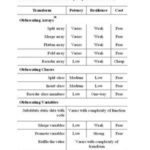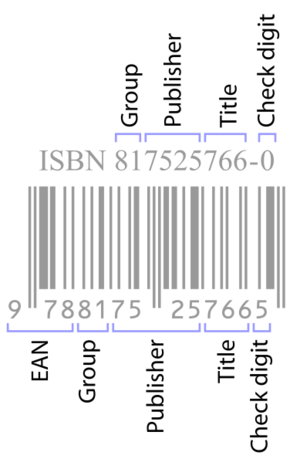The UPC, or Universal Product Code, barcode is a method of marking consumer products so that they may be identified easily. Most UPC barcodes, called version A, and have twelve numbers. However, there are other versions such as the UPC version E with only eight digits, and the ISBN-13 version with thirteen numbers used for books. There are also other barcode systems such as EAN-13 and EAN-8 that are used outside the U.S. But the UPC version A barcode is the most common.
What do the numbers in the UPC version A barcode mean?
There have been rumors circulating recently stating that the first the digits of any UPC barcode represents the country where the item was made. Many internet users have received emails regarding this. The emails usually also give a listing of three digit numbers and their corresponding country. These emails are generally not from spammers, but from friends or relatives relaying this information with good intentions.
Since many American consumers do not want to buy products from certain foreign countries, this seemed like a great way to tell where the product was from. Believing the three digit story in the emails, American consumers who wanted to buy only American products, had, it seemed, a way of assuring the origin of a product. And they could avoid buying products from countries that sell inferior products, have no laws regulating food processing and use processing methods that are illegal in the U.S.
However, the three digit story is untrue. The senders of these emails were misinformed and those who received them were unintentionally misled. The first three digits of the UPC barcode does not represent the country where the product was made.
So what do those numbers really mean?
The first number represents the type of product. For example, a zero indicates regular UPC codes, a three means that it is an item that needs to be weighed at the store, and a four is used for drug and health type items.
The next five numbers are the manufacturer’s identification number. This is assigned to the manufacturer or the distributor of the item by the UCC Council, the organization that coordinates barcode standards.
The next five numbers are the manufacturer’s or distributor’s item number for that individual product and is assigned by the manufacturer or distributor.
The last number, called the check digit, is the most interesting number of the barcode. It is gotten by a calculation using the other eleven numbers of the code. For example, the UPC barcode pictured with this article is 073435000068. We can determine what the 8 represents by the following: First the numbers that are in the odd positions are added together. In this example 0 + 3 + 3 + 0 + 0 + 6 = 12. The sum is then multiplied by three, 12 x 3 = 36. Then the numbers that are in the even positions are added together. In this example 7 + 4 + 5 + 0 + 0 = 16. The two numbers are then added together. In this example 36 + 16 = 52. Then we determine what number when added to 52 becomes a multiple of ten. In this case 52 + 8 = 60, where 60 is the multiple of ten and 8 becomes the last digit in the barcode. Every time a barcode if read, the scanner performs this calculation to make sure the item is scanned correctly.
Now that you know what those UPC barcode numbers really mean, you can disregard any future emails from well meaning associates regarding UPC barcodes.





